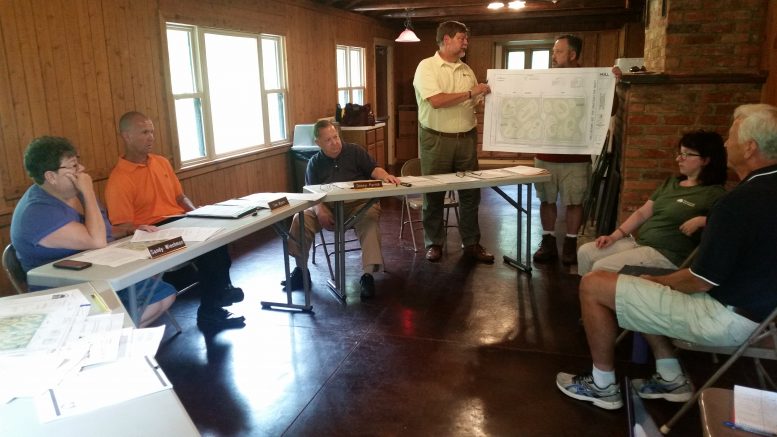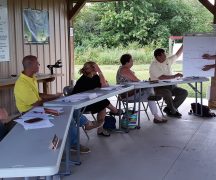By JAN LARSON McLAUGHLIN
BG Independent News
The Wood County Park District will be allowing tiled farmland to revert back to wetlands – with the help of a $301,000 grant.
The park district board voted last week to work with the Black Swamp Conservancy, which received the grant, to turn 10 acres of the Carter Historic Farm property into a wetlands area.
The decision came despite protests by Tom Carpenter, who farms the land which Sally Loomis donated to the park district.
“There was a significant amount of labor in clearing that land,” Carpenter said.
But with the grant funding needing to be accepted by July 1, the park board voted to go ahead with the first phase of the wetlands project.
“I know that’s not the outcome you wanted,” park board president Denny Parish said to Carpenter after the vote. “But I respect you coming.”
Carpenter attended many of the park board meetings where the wetlands project was discussed.
“I’m just trying to preserve the farmland that’s already there,” he said. Carpenter pointed out that the acreage being turned into wetlands will have a “very, very minimal” impact on Lake Erie, since an estimated 6 million acres drain into the lake.
But the idea of turning down grant funding just didn’t sit well with the park board.
“I’m sympathetic to what your position is,” Parish said to Carpenter.
“But that money is going to be spent,” Parish said. “It’s either going to be spent in Wood County or it’s going to be spent somewhere else.”
With the $301,000, the Black Swamp Conservancy plans to make the 10-acre field into a large “bowl” with small pools to hold water longer. Trees and shrubs will be planted, explained Melanie Coulter and Rob Crain, executive director of the conservancy.
Berms along the edges of the wetlands will allow for trails that can be used for educational purposes.
Crain said work will likely begin on the acreage as soon as the crops are taken off later this year.
The wetlands plan will slow down water into the ditch, which leads to the Touissaint Creek, and then to the Maumee River basin. Instead of field water running straight into the ditch from tiles, it will be filtered, Coulter explained.
The original plan called for two 10-acre portions to be converted into wetlands in two phases. Wood County Park District Director Neil Munger said another option could be to turn the second 10 acres into a wet prairie, which would be much less expensive.
But two board members, Tom Myers and Bill Cameron, expressed a desire for the park district to fund the rest of the project, estimated at $148,000 to turn the other 10 acres into wetlands.
“I hate to see projects start and then stop,” Cameron said.
And Myers noted the recent passage of the park district levy, pointing out that the park board has a duty to invest in its properties.
A decision on the next phase will be made at a later date.
In other business, the park board gave all year-round employees a 3.5 percent raise, effective July 1. Parish said the board was reluctant to grant raises at the beginning of the year, since it had a levy on the May ballot. However, the overwhelming passage of the levy has made the board comfortable in offering the cost of living raises.
The park district employees received 2.5 percent raises last August. The Wood County Commissioners gave its employees 3 percent raises in 2017 and in 2018.
The raises will cost the park district about $47,000 a year for the 27 full-time and six part-time employees. No raises were granted for the park district’s 11 seasonal employees.
Also at the meeting, the park board:
- Listened as Munger presented the district’s statutory budget, which offers a preliminary look at means for next year. The budget includes less money for capital improvements and land acquisition, down from $4.3 million this year to $3.8 million next year.
- Discussed the need to get its ranger staff filled, since crime is up in the parks this time of year. Recent incidents have involved graffiti on some buildings and marijuana being found growing on Otsego Island.
- Heard a report from Munger that surveillance is being added as some of the parks, including Carter Historic Farm, Beaver Creek Preserve, and Sawyer Preserve.
- Agreed to raise employee mileage rates to mirror government rates of 54.5 cents per mile.
- Renewed its public entities pool membership with $3 million liability coverage. The cost went down from $74,182 last year to $71,376 this year. Joe Schroeder, of Miller Insurance in Grand Rapids, explained the policy. “It’s been really exciting to watch the park district grow,” during its time with the pool coverage, he said.





